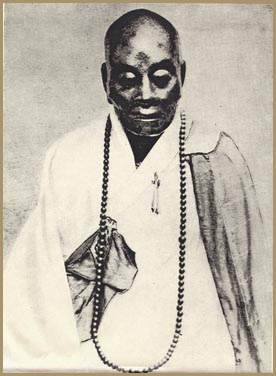|
Personal History
The Poems
Transmission
Prajna
Maha-prajna sutra
Meaning of prajna
Meaning of paramita
84000 Insight
Like rainwater
Ignorant and wise
Inside and out
Verse
Questions
Rebirth in Pure Land
Seeing the Pure Land
Verse
Dhyana and Prajna
Lamp and Light
Practice
Freeflowing
Not sudden nor gradual
Freedom from thought
Sitting Meditation
Explanation
Repentance
Five perfumes
Formless repentance
Four Vows
Explanation
Three refuges
Three Bodies
Dharmakaya
Self refuge
Sambhogakaya
Nirmanakaya
Self realization
Verse
Glossary
|
The Platform Sutra is perhaps the most famous teaching from the Sixth Patriach, Hui Neng (638-713). The Platform Sutra is also known as the Sutra of Wei Lang, from the first translation into English published in 1930 by Mr. Wong Mou-lam. This is the only writing from a Zen master to have been given the status of "Sutra", a term otherwise reserved for teachings from the Buddha as recounted by Ananda.
Page numbers appearing on the top of each page correspond to the pages in
Thomas Cleary's translation, The Sutra of Hui-Neng Grand master of Zen. This provides easy cross-reference to a popular translation of the work.
To print a page, click on the
"print page" link, then print that page from the browser.

Hui Neng's mummy. This photo was taken before the Cultural Revolution and the Red Guard's damage to the remains in the 1960's. The mummy had to be reassembled and lacquered heavily after the damage. |
| | |
|

